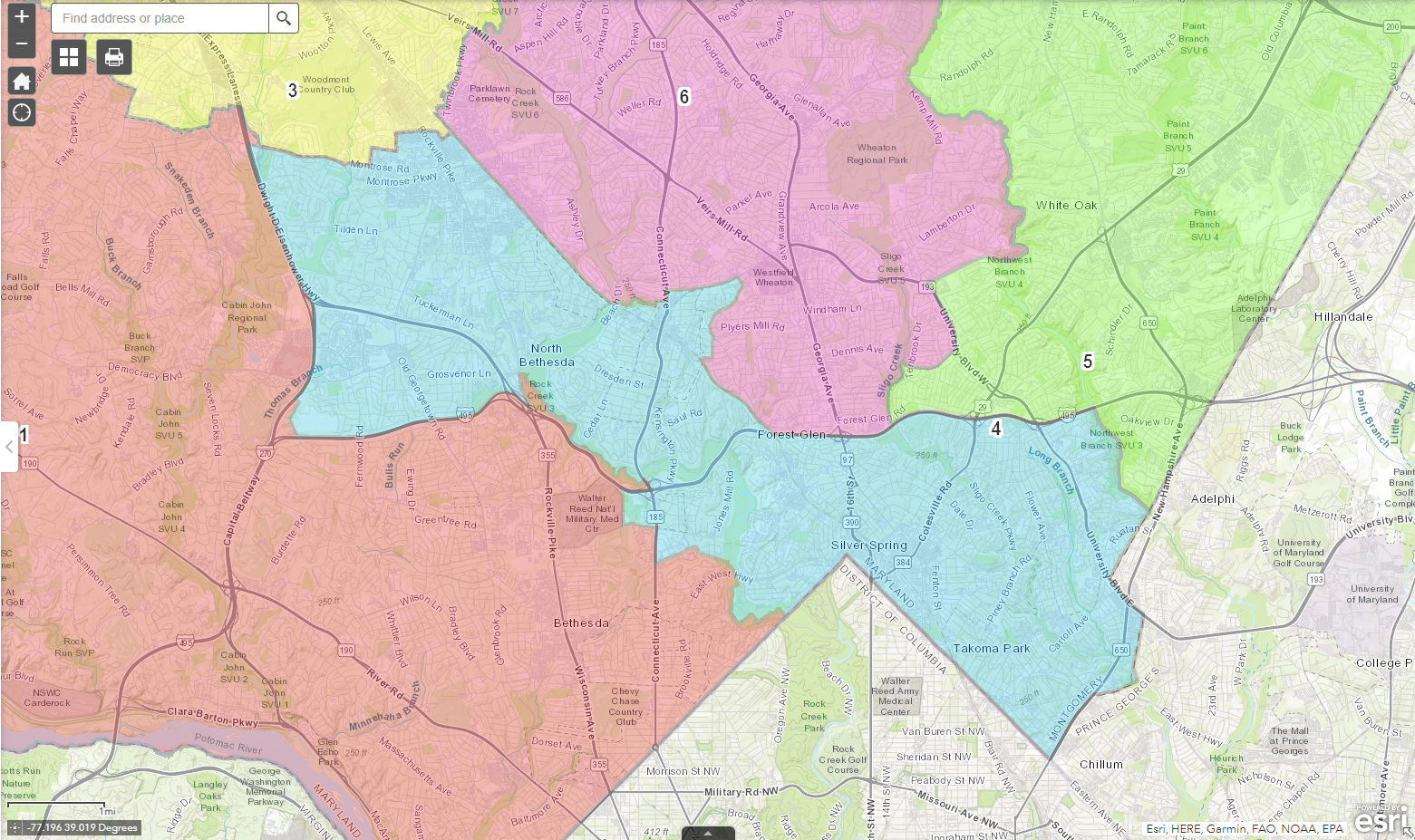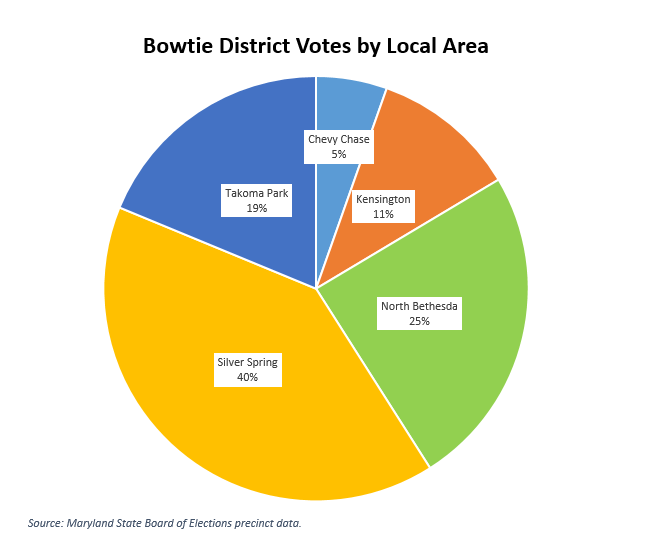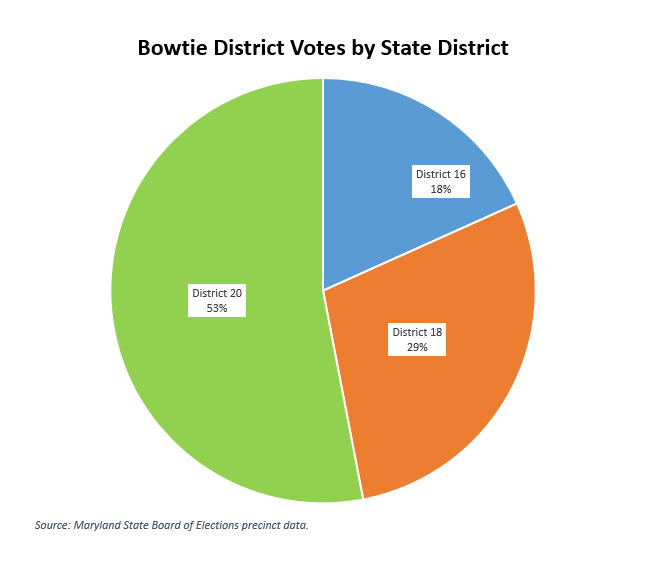By Adam Pagnucco.
Few if any parts of the county council’s redistricting exercise of last year were more controversial than the creation of Council District 4, popularly known as “the Bowtie District.” That’s because the district amputated the old District 5 and added areas from the old District 1, creating an odd hybrid stretching from southern Rockville and part of Bethesda in the west to Takoma Park in the east. These communities have not been part of the same council district before but they are now.
Why was the district created? The county had numerous priorities in redistricting, including creating a Black-plurality district in the east; a Latino-plurality district based in Wheaton, Glenmont and Aspen Hill; keeping most of Bethesda, Chevy Chase and Potomac together in the same district; and keeping most of incorporated Rockville in one district. In order to accomplish all of those goals simultaneously while ensuring that all council districts had comparable populations, the leftover areas had to result in the Bowtie District.

The area in blue is the Bowtie District.
Geography was destined to play a huge part in the Bowtie District’s first election. While most parts of the district are relatively dense – especially Downtown Silver Spring – the politics of the areas vary. Takoma Park and Downtown Silver Spring in the east are the core of State Legislative District 20, probably the most progressive state district in Maryland. The areas to the west have been part of State Legislative Districts 16 and 18, which are also progressive but not quite as far left as District 20. These areas were bound to produce different styles of politician – and they did.
From the east came Takoma Park Mayor Kate Stewart, who follows in a long tradition of progressive city politicians. From the west came Amy Ginsburg, who had worked with residents and developers in Friends of White Flint to develop North Bethesda. From the very beginning, each of them set out to grow from their starting base. And then at the filing deadline, four-term District 18 Delegate Al Carr joined them.
The chart below shows the distribution of votes cast in the district by local area. (See my methodology post for definitions.)

Right away, Stewart’s advantage is obvious. The percentage of votes cast in the district by Takoma Park and the adjacent Downtown Silver Spring was 59%. All Stewart had to do was hold onto those areas and she would be in the driver’s seat.
The chart below shows the distribution of votes cast in the district by state legislative district.

Carr’s starting base – District 18, which he has represented since 2007 – was less than 30% of the vote. In contrast, super-progressive District 20 was a majority of the electorate. Carr desperately needed to expand outside of his base, but getting into the race at the filing deadline did not give him much time to do so. That would have major consequences for the outcome.
How did the election turn out? We shall see in Part Two.
